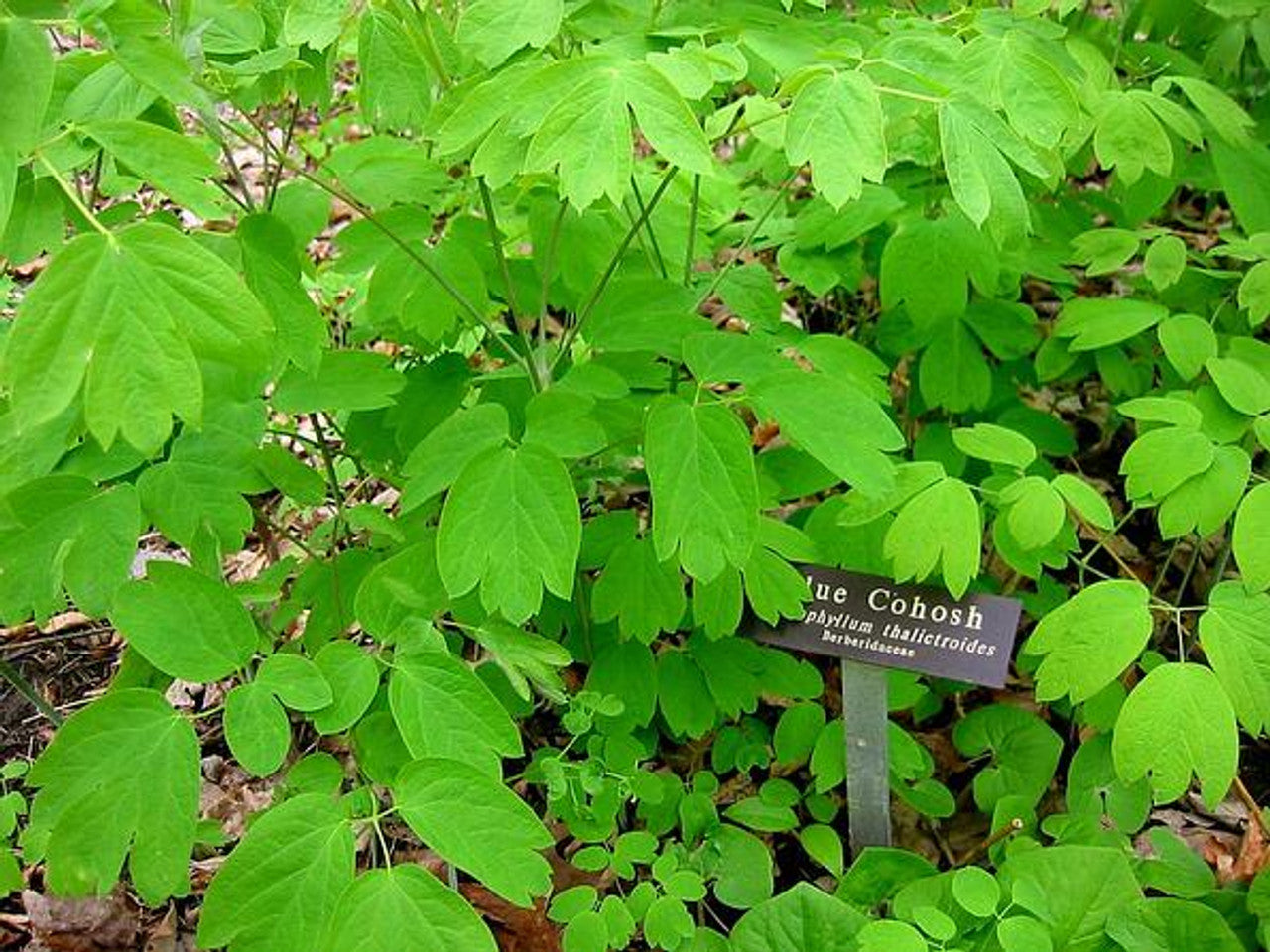
Blue Cohosh
Blue Cohosh (Caulophyllum thalictroides) is a native woodland perennial. It emerges in early spring, sporting unique foliage and sweet, delicate flowers and seeds. Native Range: Rich deciduous woods of eastern and central North America.
Blue Cohosh plants are easy to grow.
The unique color and texture of Blue Cohosh’s early foliage make it a standout among spring wildflowers, creating a muted, textured contrast with the forest floor. As spring deepens, the plant produces clusters of small, star-shaped flowers in shades ranging from yellow-green to purplish-brown. Although not as showy as some other woodland plants, these blooms have a gentle appeal and can attract small, native pollinators. By late spring or early summer, the flowers are replaced by conspicuous, blue, berry-like seeds. These seeds mature and turn a deep blue by late summer, offering a visual highlight and a lasting ornamental interest as they contrast with the now deep green foliage.
The common name Blue Cohosh refers to the color of the plant’s ripe seeds, while “cohosh” is thought to be derived from an Algonquian word meaning “rough,” a reference to the plant’s root. Blue Cohosh was used medicinally by Indigenous peoples and early herbalists, although today it is more commonly grown for ornamental purposes in gardens. The plant is ideally suited to woodland gardens, shaded borders, or naturalized areas under deciduous trees.
What type of soil does Blue Cohosh need to thrive?
It prefers humus-rich, consistently moist but well-drained soil and dappled to full shade, similar conditions to its native woodland habitat. Blue Cohosh is a very low maintenance perennial once established, and will come back every year and slowly spread to create beautiful clumps. It is an early riser, and its leaves hold on into the hot summer months, which makes it a nice accompaniment to other natives that prefer the shade and share its cultural needs like trilliums, Virginia bluebells, and ferns. They have similar light, water, and soil preferences, and since they bloom or emerge in the spring, you can layer them to create a lush understory.
Blue Cohosh also provides some ecological benefits for native biodiversity. Although its flowers are not particularly robust, they offer pollen for early-season insects, and its seeds may be consumed by some wildlife. The inclusion of Blue Cohosh in a garden planting can help signal a diverse and ecologically appropriate landscape that closely mirrors natural woodland systems.
One of the main advantages of Blue Cohosh in the garden is its ability to fill a seasonal niche between early-spring ephemerals, which often disappear by summer, and shade perennials that bloom later in the season. Its foliage remains attractive well into the warm months, helping to maintain a lush and verdant understory even as other springtime plants begin to die back. This characteristic can be especially valuable for gardeners seeking to extend the display of texture and interest in their shaded areas.
Gardeners might select Blue Cohosh for its unique springtime emergence, unusual flowers, and eye-catching blue seeds. It adds texture, seasonal movement, and an element of woodland authenticity to any shaded garden or naturalized planting. For those interested in creating a native garden that unfolds and surprises with each new season, Blue Cohosh is a plant that rewards patient observation while enhancing both the beauty and ecological value of the landscape.




